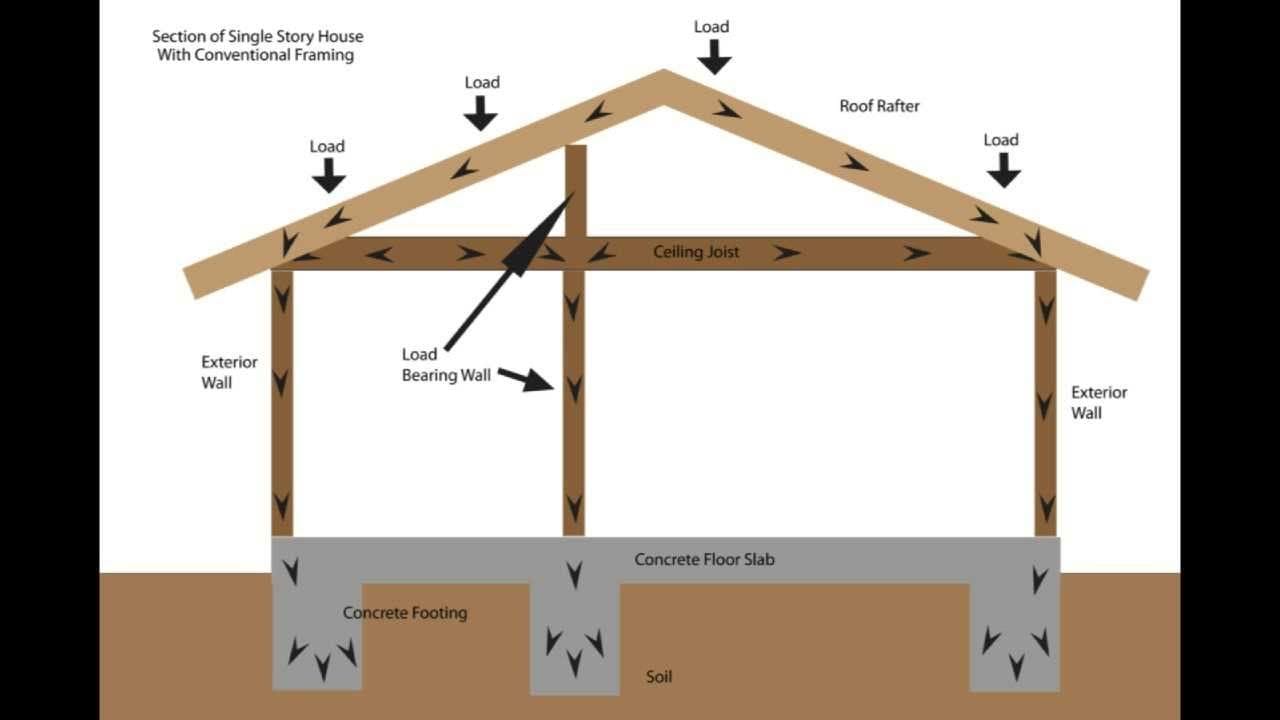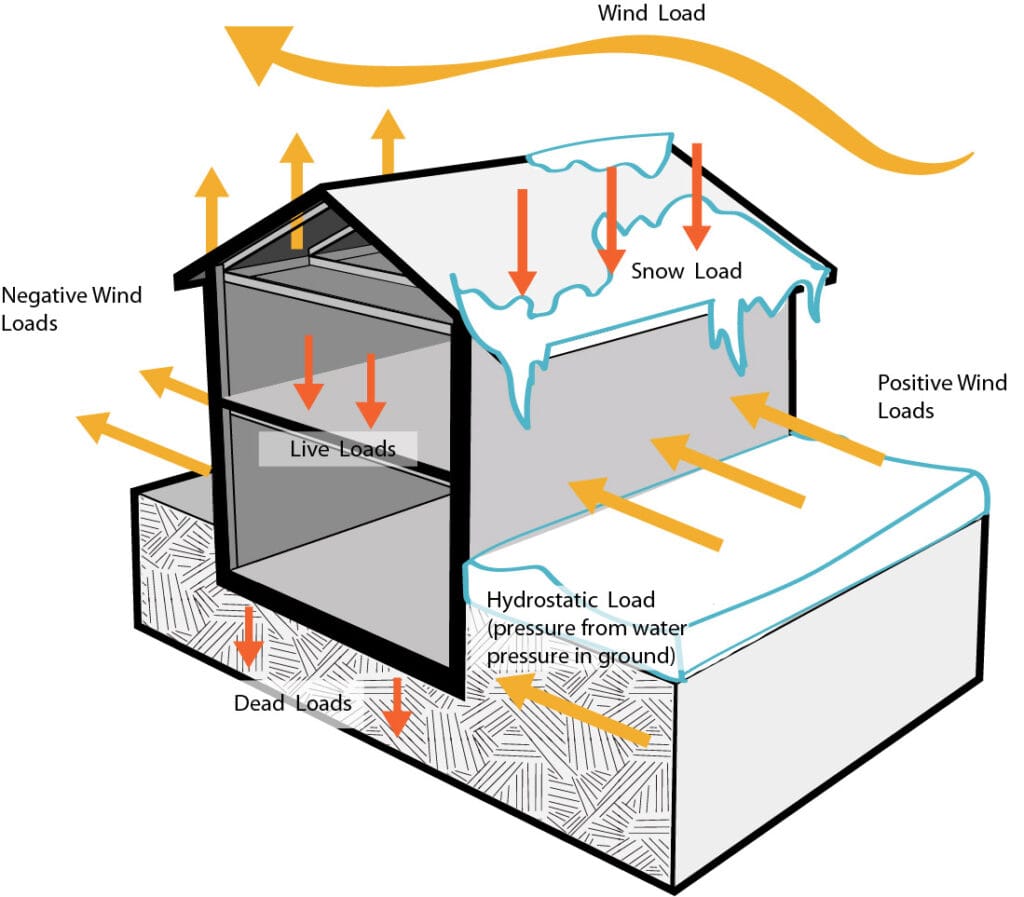Take The Quiz On This Post
Read the post, then take the quiz—test your knowledge and see what you’ve learned!
Chapter 1: Introduction to Structural Loads
1.1. Defining Structural Loads: An Overview
Structural loads are the basic forces that affect a building or structure, playing a crucial role in shaping architectural plans and ensuring the structure's strength. These loads are sorted into different types based on how they work, and they are very important in constructing various buildings. Architects, engineers, and builders need to understand these forces well because they directly affect how a structure is designed, its safety, and how well it works.
1.2. Historical Context of Load Management: Evolution Over Time
The idea and understanding of how structures handle weight have changed a lot over time. Even ancient societies like the Romans and Egyptians knew that spreading out the weight in their big buildings was important. The journey from those early ideas to how we deal with loads today shows how technology and engineering have improved. Now, when we manage loads, we use math and science to make sure buildings can handle different forces for a long time.
1.3. Significance of Load Analysis in Structural Engineering
Analyzing loads is a vital part of designing structures. It involves assessing and foreseeing the forces that a building must withstand throughout its lifespan. This analysis guarantees that a building can manage everyday use, environmental challenges, and unforeseen circumstances without compromising safety and durability.
A comprehensive load analysis results in efficient and budget-friendly designs, minimising unnecessary costs and maximising the use of materials while adhering to safety standards.
Chapter 2: Vertical Loads in Structures
2.1. Dead Loads: Characteristics and Calculation
Dead loads, also known as permanent loads, are intrinsic to the structural integrity of buildings. They are immovable forces comprising the weight of the structure itself, including elements like walls, floors, roofs, and fixed equipment. Calculating dead loads is a precise science, requiring the consideration of the material weight and volume of every structural component.
This calculation forms the foundation of structural design, ensuring that the building can support its own weight over its lifespan.
2.2. Live Loads: Dynamics and Impact on Structures
Live loads, or imposed loads, are transient and variable forces that a structure must support. These include the weight of occupants, furniture, and movable objects. Unlike dead loads, live loads fluctuate in intensity and location, posing unique challenges for engineers.
The design must account for the maximum expected live load to ensure safety and structural integrity. Live loads are particularly critical in public buildings like offices and theaters, where occupancy can significantly vary.
2.3. Impact Loads: Understanding Sudden Forces
Impact loads are sudden, short-duration forces that can arise from various events, such as falling objects or vehicular collisions. These loads can cause significant stress on structural elements, demanding robust design strategies to absorb and dissipate the energy. Understanding the potential sources and magnitudes of impact loads is crucial in designing structures, particularly in areas prone to dynamic forces like industrial zones or transportation hubs.
Key Considerations for Vertical Load Analysis:
- Accurate calculation of dead loads is vital for the stability and longevity of any structure.
- Live load analysis must consider the highest potential occupancy and use scenarios.
- Structures must be designed to withstand unexpected impact loads without compromising safety.
Chapter 3: Horizontal Load Factors
3.1. Wind Loads: Analysis and Implications for Design
Wind loads are vital in structural engineering, especially for tall buildings and large structures. These horizontal forces, caused by moving air, can put substantial pressure on structures. Precise analysis of wind loads requires considering factors like location, building height, and shape.
Engineers often use advanced computational fluid dynamics (CFD) models to predict wind patterns and their effects on buildings. Effective design includes features to reduce wind forces, ensuring stability and safety.
3.2. Seismic Loads: Earthquake-Induced Forces and Mitigation Strategies
Seismic loads occur when earthquakes release energy, causing both up-and-down and side-to-side forces. These loads are especially important in areas prone to earthquakes. Structural engineers perform seismic load calculations to design buildings that can endure earthquake forces without collapsing.
Advanced methods like base isolation and energy dissipation systems are used to improve a building's ability to withstand earthquakes. Knowing how different materials respond to earthquakes and including flexible design elements are essential to reduce earthquake risks.
3.3. Other Horizontal Loads: Addressing Additional Challenges
In addition to wind and earthquake forces, buildings can also experience other horizontal pressures like water pressure, sideways soil pressure, and impacts from vehicles. These forces need to be thoughtfully addressed during the design stage to maintain the structural strength. For example, structures like retaining walls and underground constructions must be built to withstand the lateral soil pressure.
Similarly, buildings located close to roads or train tracks should consider the potential impact from vehicles. Incorporating these various load factors into the design is crucial to ensure the safety, durability, and efficiency of structures.
Key Points in Horizontal Load Analysis:
- Wind load analysis must consider aerodynamic effects and local wind patterns.
- Seismic load design requires an understanding of ground motion characteristics and building dynamics.
- Addressing other horizontal loads demands specialised knowledge of environmental conditions and potential external impacts.

Chapter 4: Longitudinal Loads and Special Considerations
4.1. Tractive and Braking Forces: Critical in Bridge and Gantry Design
Longitudinal loads, mainly the forces when vehicles accelerate or brake, are crucial in designing bridges and gantry structures. These forces occur, especially on structures like bridges and overhead gantry cranes. Understanding these forces is vital to ensure the stability and safety of the structure.
The design process involves considering how these forces are distributed, their strength, and their dynamic impact on the structural components. Engineers often rely on advanced simulation tools for precise predictions and analysis, allowing them to design structures that can effectively handle these longitudinal forces.
4.2. Longitudinal Load Analysis: Techniques and Applications
Analysing longitudinal loads is a thorough process that combines theory and practicality. It involves techniques like in-depth force analysis, assessing stress in structural components, and considering dynamic load scenarios. In bridge engineering, the primary concern is how these loads impact the tension and compression within structural elements, demanding precise calculations and safety evaluations.
Likewise, in the design of gantry girders, the focus is on understanding how these loads interact with vertical forces, such as dead and live loads, to ensure overall structural strength and functionality. Applying these analyses significantly enhances the durability and lifespan of structures dealing with longitudinal loads.
Key Insights:
- Tractive and braking forces require careful consideration in the structural design of bridges and gantries.
- Longitudinal load analysis combines theoretical calculations with practical design to ensure structural resilience and safety.
- The application of these analyses is crucial in addressing the unique challenges posed by these dynamic forces.
Chapter 5: Environmental and Special Loads
5.1. Snow Loads: Regional Significance and Computation
In areas prone to frequent snowfall, snow loads are a crucial consideration in structural design. These loads can substantially increase the weight a structure must bear, particularly on its roofs. Calculating snow loads entails analysing regional climate information, snow accumulation patterns, and snow characteristics. Based on this data, structural engineers determine the extra weight that buildings need to support during snowy periods, ensuring that they can endure these environmental challenges while maintaining safety.
5.2. Soil and Fluid Pressure: Effects on Subterranean Structures
Below-ground constructions like basements and tunnels encounter distinct difficulties caused by soil and liquid pressure. These pressures can apply substantial force on the walls and foundations of these subterranean structures. To address this, it's crucial to analyse soil properties, groundwater levels, and hydrostatic pressure during the design process. Engineers utilise advanced modeling methods to anticipate these pressures and create structures capable of withstanding them, guaranteeing enduring stability and safety.
5.3. Vibrations and Fatigue: Assessing Long-Term Impact
Vibrations and fatigue loads are especially relevant for structures exposed to dynamic forces such as traffic, machinery, or seismic activity. Over time, these vibrations can cause fatigue in materials, leading to potential failure.
In-Depth Insights:
- Snow loads require specialised calculations based on regional climatic conditions to ensure structural safety in snowy regions.
- Soil and fluid pressures demand rigorous analysis and design strategies for subterranean structures to withstand these environmental forces.
- Vibrations and fatigue are critical considerations for structures exposed to continuous dynamic forces, requiring innovative materials and design solutions for longevity and safety.
Conclusion
In conclusion, understanding the various forces that affect structures is crucial for creating safe and long-lasting buildings and infrastructure. From the basic principles of these loads to the detailed analysis of vertical, horizontal, and longitudinal pressures, you now have some insight into the fundamentals of structural engineering.
By tackling the unique challenges posed by environmental factors and dynamic forces, engineers can construct resilient structures that prioritise the safety of occupants and the durability of our built environment.







